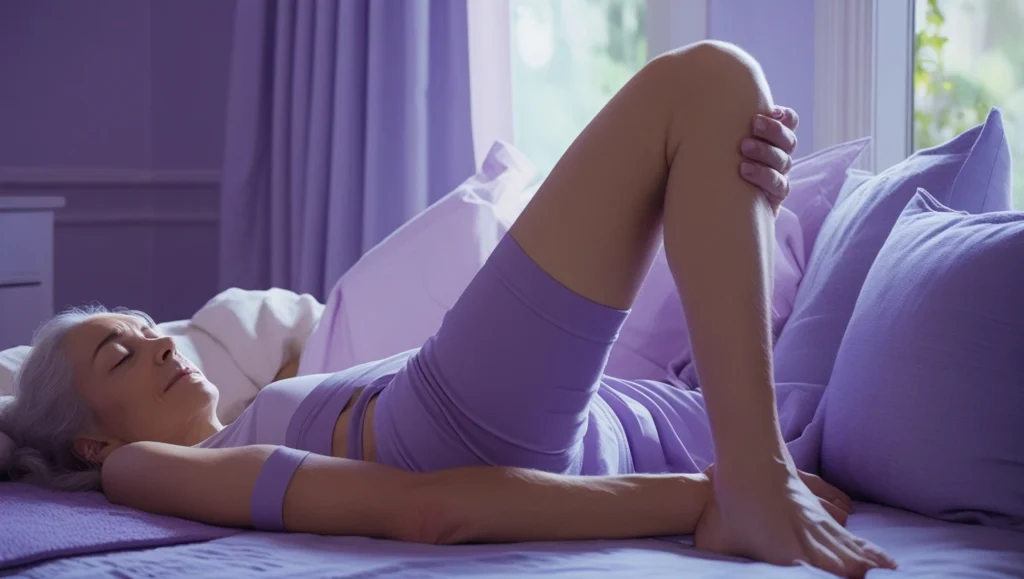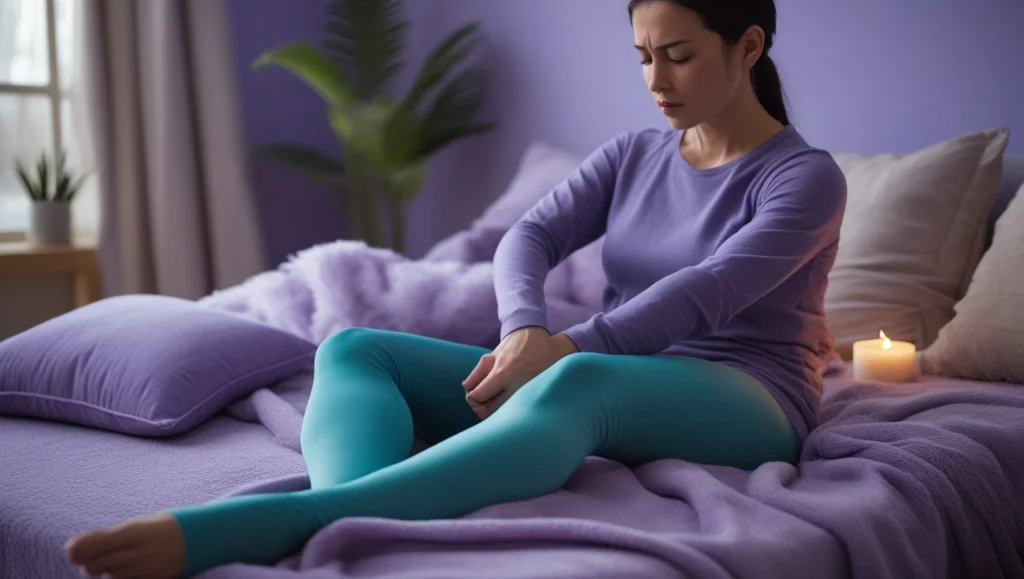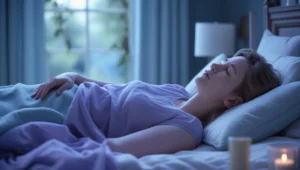What is Restless Legs Syndrome (RLS)?
Restless Legs Syndrome (RLS), also known as Willis-Ekbom Disease, is a neurological disorder characterized by an uncontrollable urge to move the legs, often accompanied by uncomfortable sensations. Symptoms typically worsen at night, leading to sleep disturbances and reduced quality of life.
Symptoms of Restless Legs Syndrome
The primary symptoms of RLS include:
- Uncomfortable Sensations – A creeping, crawling, tingling, or burning feeling deep inside the legs.
- Urge to Move Legs – An overwhelming need to move the legs to relieve discomfort.
- Worsening at Rest – Symptoms flare up during inactivity (sitting or lying down).
- Nighttime Aggravation – Most severe in the evening or at night, disrupting sleep.
- Temporary Relief with Movement – Walking, stretching, or massaging the legs eases symptoms temporarily.
Note: Some people also experience periodic limb movements during sleep (PLMS), where legs jerk involuntarily every 15-40 seconds.

Causes of Restless Legs Syndrome
The exact cause of RLS is unknown, but several factors contribute:
1. Genetic Factors
- About 50% of RLS cases have a family history.
- Linked to gene variants affecting dopamine and iron regulation.
2. Dopamine Dysfunction
- RLS is associated with low dopamine levels, a neurotransmitter controlling muscle movement.
3. Iron Deficiency
- Low ferritin levels (iron stores) in the brain disrupt dopamine production.
- Common in pregnant women, kidney disease patients, and frequent blood donors.
4. Chronic Diseases
- Diabetes, kidney failure, and peripheral neuropathy worsen RLS.
- Parkinson’s disease patients often have RLS due to dopamine issues.
5. Medications & Substances
- Antidepressants (SSRIs), antihistamines, and antipsychotics can trigger RLS.
- Caffeine, alcohol, and nicotine may aggravate symptoms.
6. Pregnancy (Secondary RLS)
- Up to 30% of pregnant women develop RLS, especially in the third trimester (likely due to iron deficiency and hormonal changes).
When to See a Doctor
Consult a neurologist or sleep specialist if:
✔ Symptoms occur 3+ times per week and disrupt sleep.
✔ You develop daytime fatigue, mood swings, or depression.
✔ Over-the-counter remedies (iron, magnesium) don’t help.
Next Steps: Diagnosis & Treatment
RLS is diagnosed through medical history, blood tests (iron levels), and sleep studies. Treatment includes:
- Iron supplements (if deficient)
- Dopamine agonists (ropinirole, pramipexole)
- Lifestyle changes (exercise, warm baths, massage)

Restless Legs Syndrome (RLS) – Comprehensive Treatment Guide
Medical Treatments for RLS
1. Dopamine Agonists (First-Line Treatment)
- Ropinirole (Requip): Start with 0.25 mg 1-2 hours before bedtime
- Pramipexole (Mirapex): Initial dose 0.125 mg in evening
- Rotigotine (Neupro): Transdermal patch (1-3 mg/24 hours)
- Side Effects: Nausea, dizziness, impulse control disorders (gambling, shopping)
2. Alpha-2-Delta Ligands (For Refractory Cases)
- Gabapentin Enacarbil (Horizant): 300-600 mg at 5 PM
- Pregabalin (Lyrica): 50-300 mg at bedtime
- Particularly effective for RLS with neuropathic pain
3. Iron Supplementation
- Oral Iron (Ferrous Sulfate): 65 mg elemental iron + 100 mg vitamin C on empty stomach
- IV Iron (If Ferritin <75 μg/L):
- Ferric Carboxymaltose (Injectafer)
- Iron Sucrose (Venofer)
4. Opioids (Severe, Treatment-Resistant RLS)
- Low-dose Oxycodone (5-10 mg)
- Buprenorphine/Naloxone (Belbuca)
- Risk: Tolerance, dependence (use as last resort)
Non-Pharmacological Treatments
1. Lifestyle Modifications
- Caffeine/Alcohol Elimination: Complete avoidance after 12 PM
- Smoking Cessation: Nicotine worsens symptoms
- Evening Exercise: Moderate cycling/elliptical 4-6 PM
2. Sensory Counterstimulation
- Compression Devices: Pneumatic leg massagers
- Temperature Therapy:
- Hot bath (104°F) 1 hour before bed
- Cold packs during flares
3. Sleep Optimization
- Delayed Sleep Phase Protocol: Gradually shift bedtime later
- Weighted Blankets: 15-20% body weight
- Vibration Pads: Bed-mounted vibration therapy
Emerging Therapies (Clinical Trials)
- Peripheral Nerve Stimulation
- Cannabinoids (Nabiximols)
- Ketamine Infusions
Treatment Algorithm
- First Line: Dopamine agonist + iron (if ferritin <75)
- Second Line: Switch to alpha-2-delta ligand
- Third Line: Low-dose opioid + continued iron
- Refractory Cases: Neuromodulation therapies
Note: Augmentation (worsening symptoms) occurs in 50-70% of long-term dopamine agonist users – requires careful monitoring.







